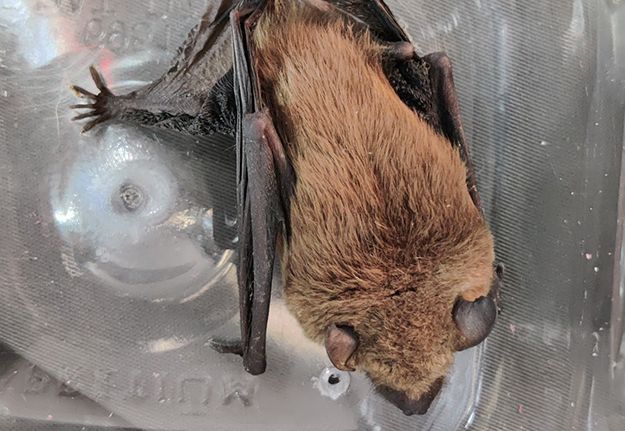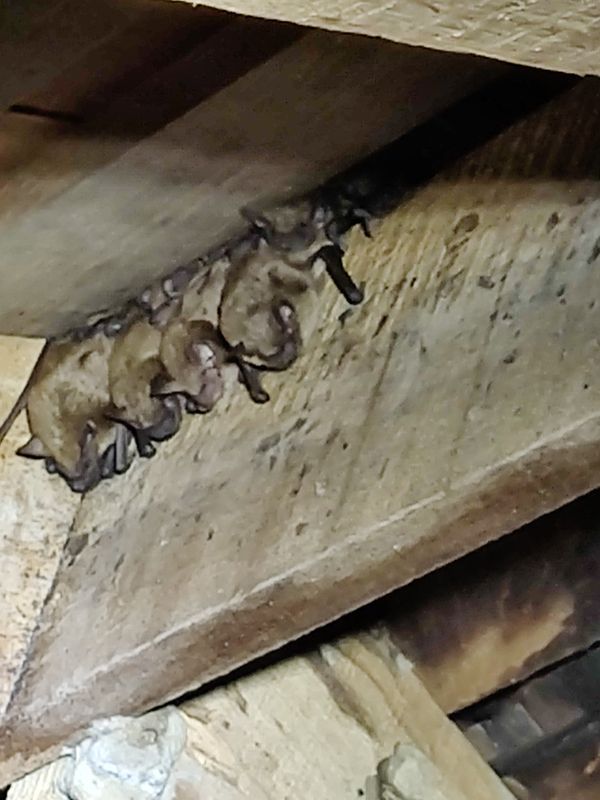Bat Management Services
Request a Quote
Hero Request Form
About Big Brown Bats
Eptesicus Fuscus (Bats)
Perhaps the most misunderstood animals we work with are bats. However, bats are vital to our ecosystem and play an invaluable role in pest control and agriculture! Bats are seasonal in their activity and can eat up to their weight in insects in one evening, making them wonderful to have around on summer evenings!
Nesting and Mating
There are ten different species of bat found in Ohio, however, the bat found most often in structures is the big brown bat. They are found in all rural and urban locations. Bats are most active once temperatures have reached 50+ degrees Fahrenheit consistently. A bat may roost or rest on your home under overhangs or on the side of your stucco or wood siding. Big brown bats may also find gaps in soffits, cracks in siding, and open vents in your home to utilize ready-made cavities. Points of entry that are common for bats are chimneys without caps, gaps at and around chimneys, and houses where the chimney pulls away. Brown bats will also utilize soffit gaps, shingle and soffit junctures, and vents without good screening behind them. A bat needs only a tiny 3/8 inch-sized hole to access a structure!
A good indicator of bat activity is small Tic-Tac-sized droppings that may be found on the ground under a vent that is being used or on the siding near the entry point. Bat guano is identified as shiny with succinct ends. The shiny portions of the dropping are the insect carapace that is not digested.
Big brown bats will have a winter and a summer den unless they use the cavity found over winter, which is called winter hibernacula. Mating begins in September, but the female bat will exhibit delayed fertilization. This means that she will induce pregnancy in the spring once temperatures break and they are flighted. Gestation is anywhere from 50-60 days. The young are called pups and are born late in May to June. Pups will stay with the mother for four to five weeks until they're able to fly and forage on their own. Bats have only one pup at a time but have been known to have twins.
Behavior and Illness
Bats are most active from dusk to dawn. If you see a bat on the ground, it may be injured or sick. If you think you have a sick or injured animal, you can contact a local wildlife rehabilitation center or individual. TLC Wildlife Management can assist you with collecting and securing the bat for transport. We can also offer local rehabilitator resources. If you have a bat in your living space, TLC Wildlife Management can help capture and release the bat back outside.

A big brown bat collected out of an office building to be released.
Bat Management FAQ
Have a bat-related question? We have the answer. Check out these FAQs and give us a call today for more information!
How Can TLC Wildlife Management Help?
TLC Wildlife Management utilizes ONLY humane techniques for the eviction of bats. We use the behavior and biology of the bat to allow the animal to evict without harm. Points of access commonly found are at shingle and soffit junctures, at soffits near downspouts, open un-capped chimneys, attic vents, roof vents, and ridge vents. We begin by performing a thorough inspection to identify all possible points of access.
TLC Wildlife Management then installs custom materials to close off possible areas of entry. Once we have secured the structure, we install temporary one-way doors at the points of entry, which allows the bats to exit, but not re-enter (assuming we have closed off all other possible entry points).
After a set length of time to ensure that all of the bats have moved on, we will return to remove the doors and place the final eviction materials. This ensures not only that the bats have left the structure, but that there is a much smaller chance that they will return as there is no longer easy access to shelter. Call today or request a quote to schedule an evaluation of the interior and exterior of your home or business. TLC Wildlife Management will provide detailed photos and education about your specific situation and help create a custom solution to help you co-exist with these important and fascinating wild neighbors.









Share On: